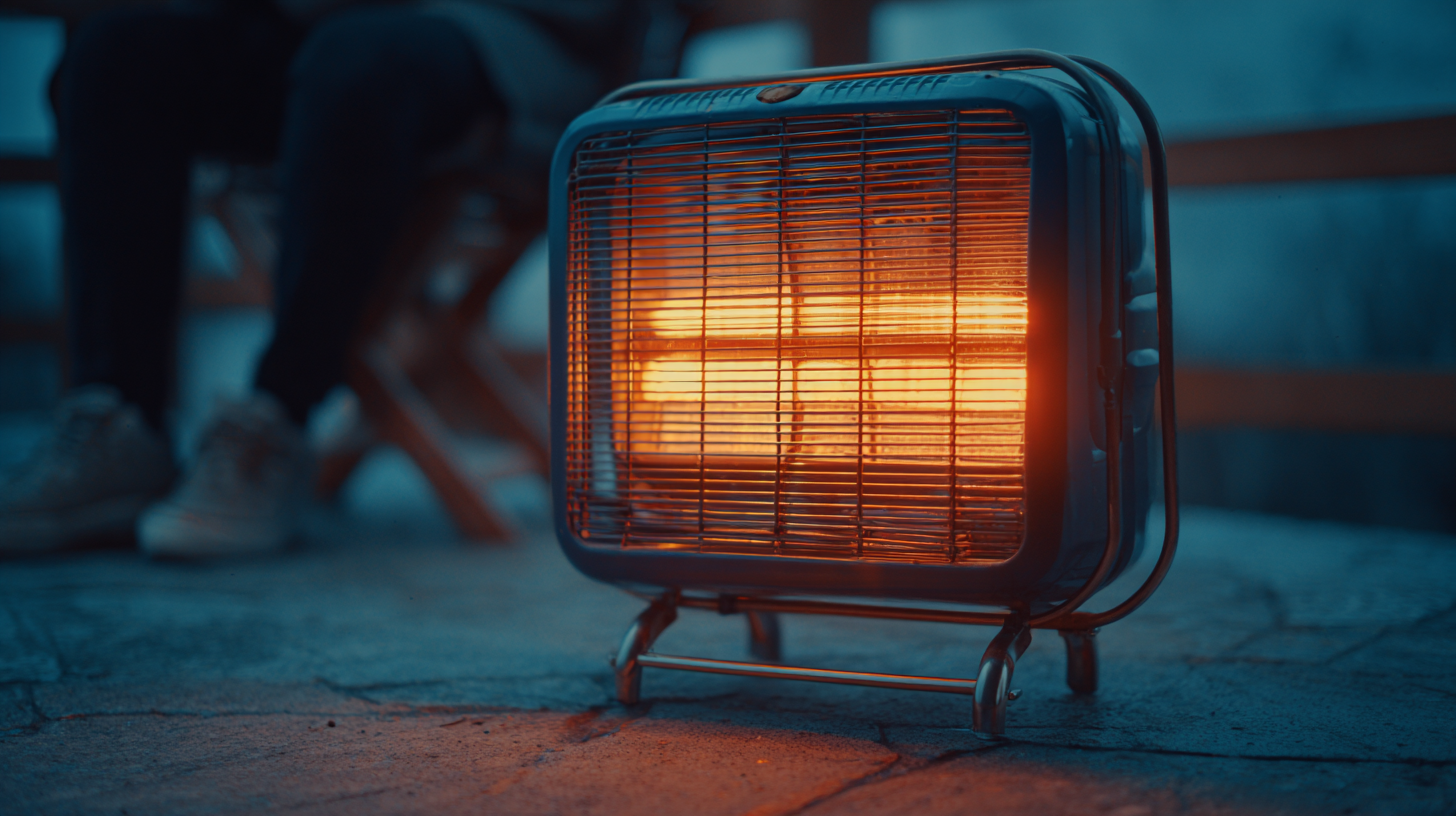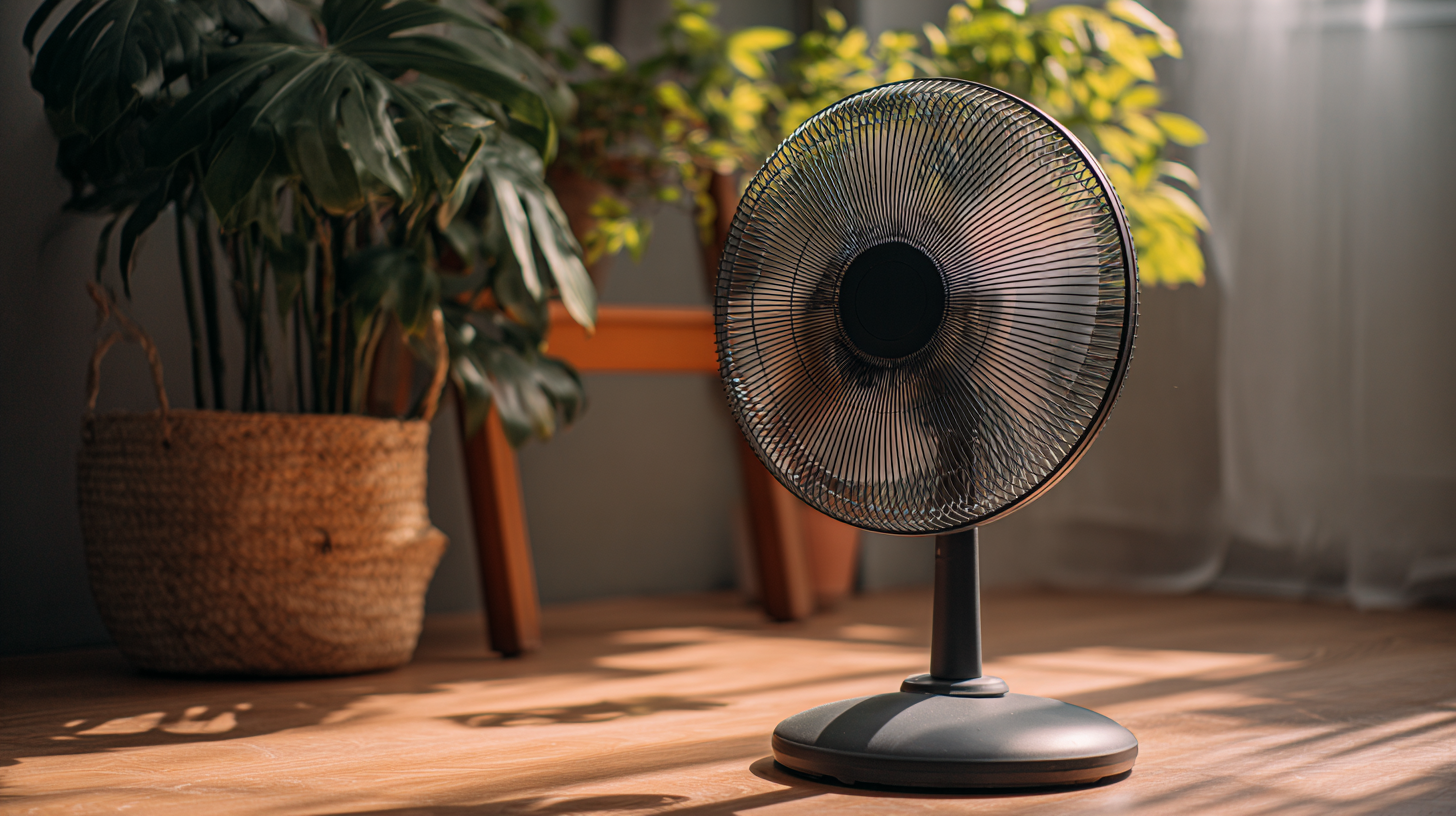In recent years, the demand for efficient heating solutions has surged, with the global market for heater fans expected to grow significantly, projected to reach over $2 billion by 2027 according to industry analysts. As colder climates become increasingly prevalent, individuals are seeking versatile options that not only deliver warmth but also optimize energy usage. Choosing the best heater fan is crucial, as these devices combine convenience and effectiveness, allowing users to enjoy a comfortable environment without incurring exorbitant energy costs. As highlighted in numerous market studies, investing in quality heater fans can result in a substantial reduction in heating expenses, making them an essential addition to any home or office.

In this blog, we will explore the advantages of selecting the right heater fan tailored to your needs, underscoring the importance of thoughtful design and quality craftsmanship that reflects the spirit of "精工细造,中国制造,服务世界."
When selecting a heater fan, energy efficiency is paramount. According to the U.S. Department of Energy, using energy-efficient appliances can reduce your energy usage by 10% to 50%. Top-quality heater fans are designed to optimize energy consumption while maintaining effective heating, which can lead to significant cost savings on your utility bills. For instance, models equipped with advanced thermostatic controls can automatically adjust heating output based on the ambient temperature, ensuring that energy is not wasted when the desired warmth is achieved.
Moreover, ENERGY STAR-certified heater fans not only meet stringent efficiency guidelines but also provide enduring performance. The Natural Resources Defense Council (NRDC) reports that households using energy-efficient heating solutions can save an average of $200 annually. The long-term benefits of investing in high-efficiency units become evident when considering their durability and reduced frequency of replacements, which further diminishes costs over time. Opting for the best heater fan thus not only promotes an environmentally-friendly lifestyle but also enhances your financial well-being through energy savings.
When selecting the right heater fan for your space, it’s crucial to consider several key features to ensure optimal performance and comfort. First and foremost, the wattage of the heater fan plays a significant role in its efficiency. For instance, heater fans with higher wattage, typically around 1500 watts, can heat spaces effectively, making them ideal for larger rooms. According to industry reports, utilizing a heater fan with adjustable settings can lead to energy savings of up to 30%, helping you to lower your electricity bills.
Another important feature is the type of heating element. Ceramic heating elements are often preferred due to their fast heating capabilities and safety features, such as automatic shut-offs that prevent overheating. Furthermore, look for portability options; models with built-in carrying handles are easier to move from room to room, allowing for flexible heating solutions.
**Tips:** When choosing a heater fan, consider models with a programmable timer to customize heating schedules according to your lifestyle. Additionally, opting for a heater with a thermostat will help maintain consistent temperatures, enhancing comfort while saving energy. Always read customer reviews to gauge reliability and user satisfaction before making your purchase.
| Feature | Description | Benefits |
|---|---|---|
| Portability | Lightweight design allowing easy movement | Can be used in multiple rooms, providing flexibility |
| Energy Efficiency | Designed to use less energy while providing adequate heat | Helps to lower utility bills and reduce carbon footprint |
| Safety Features | Includes overheat protection and tip-over switch | Provides peace of mind, especially in households with children or pets |
| Heat Settings | Multiple heat settings for customized comfort | Allows users to adjust heat based on personal preference |
| Noise Level | Designed to operate quietly | Ideal for use in bedrooms or offices without disturbances |
When selecting a heater fan, one of the most critical factors to consider is the noise level it produces. A noisy heater fan can be disruptive, especially if you plan to use it in a bedroom or a quiet office space. Understanding the decibel levels of various models can help you make an informed decision. Many manufacturers provide noise ratings, often denoted in decibels (dB), allowing you to compare options easily. Look for heater fans that advertise quiet operation, typically ranging from 30 to 50 dB, which is similar to a whisper or soft background noise.
In addition to noise levels, consider the design and features of the heater fan that contribute to quieter operation. Models equipped with brushless motors or sound-dampening technology tend to operate more silently. Some fans also come with multiple speed settings, allowing you to run them on lower settings for reduced noise while still enjoying effective heating. By prioritizing noise levels and innovative features, you can ensure that your heater fan not only meets your heating needs but also keeps your environment comfortable and serene.

When it comes to heating technologies, understanding the various types of heater fans available can significantly impact your comfort and energy efficiency. According to a study by the Department of Energy, space heaters accounted for approximately 7% of residential energy use in the United States in 2020. Among the various types, ceramic heater fans remain popular due to their quick heating capabilities and compact size. Ceramic heaters use a heating element coupled with a fan to distribute warm air rapidly, making them ideal for small to medium-sized rooms.
Comparatively, oil-filled radiator heater fans offer a different advantage. These units utilize oil as a heat reservoir, allowing for longer-lasting warmth even after the unit is turned off. The Energy Saving Trust reports that these heaters can be up to 30% more energy-efficient than traditional resistive heaters. For those seeking versatility, infrared heater fans provide distinct benefits as well; they emit radiation heat that directly warms objects rather than the air, which can be particularly effective in spaces with high ceilings or open layouts. By analyzing the unique characteristics of each heater fan type, you can select the one that best aligns with your heating needs and efficiency goals.
When selecting a heater fan, user safety should be a top priority. According to the Consumer Product Safety Commission (CPSC), there are more than 25,000 reported home fires each year attributed to heating equipment, highlighting the critical need for compliance with safety standards. Ensuring that your heater fan meets industry regulations, such as those set by Underwriters Laboratories (UL), can significantly reduce the risks associated with overheating and electrical failures. Products that adhere to these safety guidelines typically undergo rigorous testing to confirm their reliability, providing peace of mind to users.

In addition to compliance, user safety standards also encompass features like automatic shut-off systems, which engage in the event of overheating. A report from the National Fire Protection Association (NFPA) emphasizes that heaters with built-in safety mechanisms can reduce the likelihood of fire hazards by up to 70%. Moreover, selecting heater fans that have been certified by regulatory bodies ensures that the materials used are flame-retardant and free from hazardous substances, thereby enhancing indoor air quality. By choosing a heater fan that prioritizes safety, consumers can create a warm and secure environment in their homes.